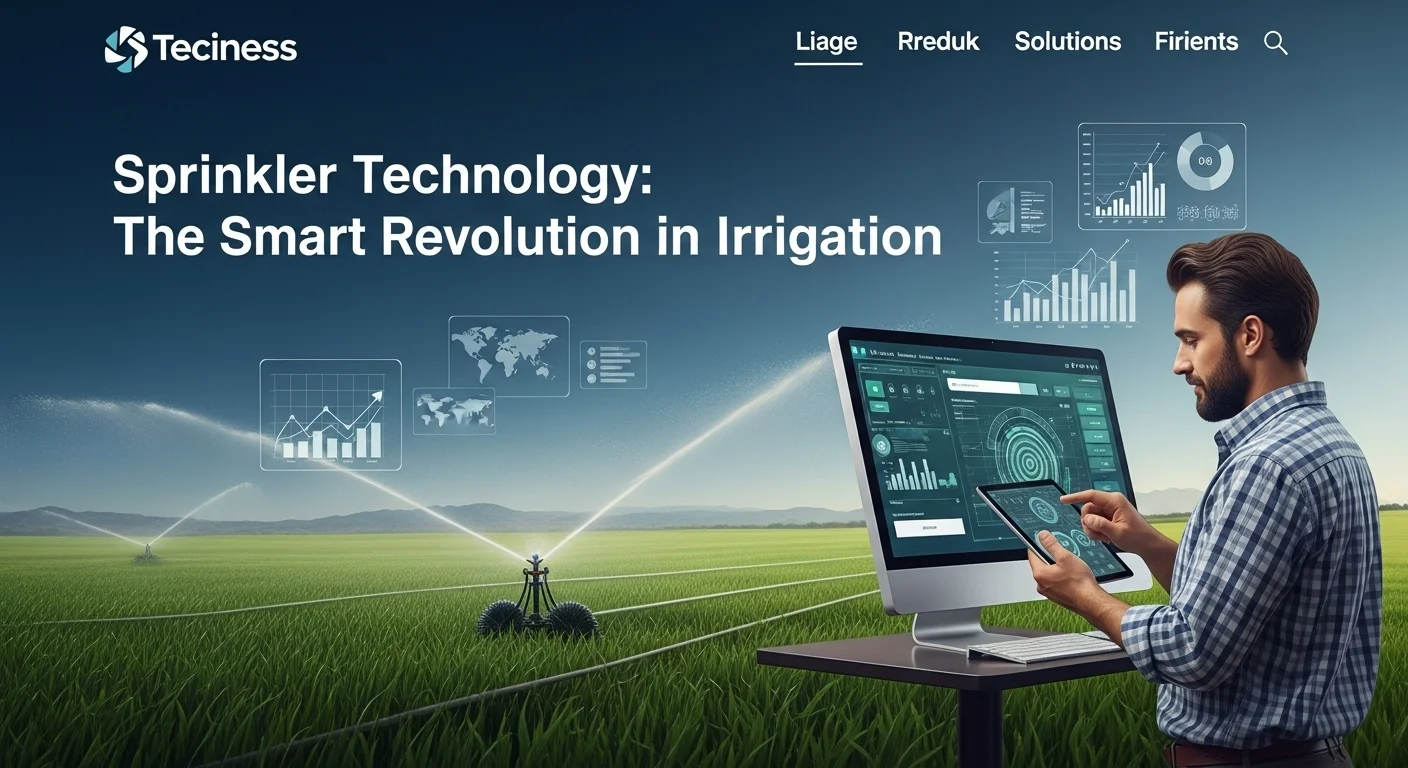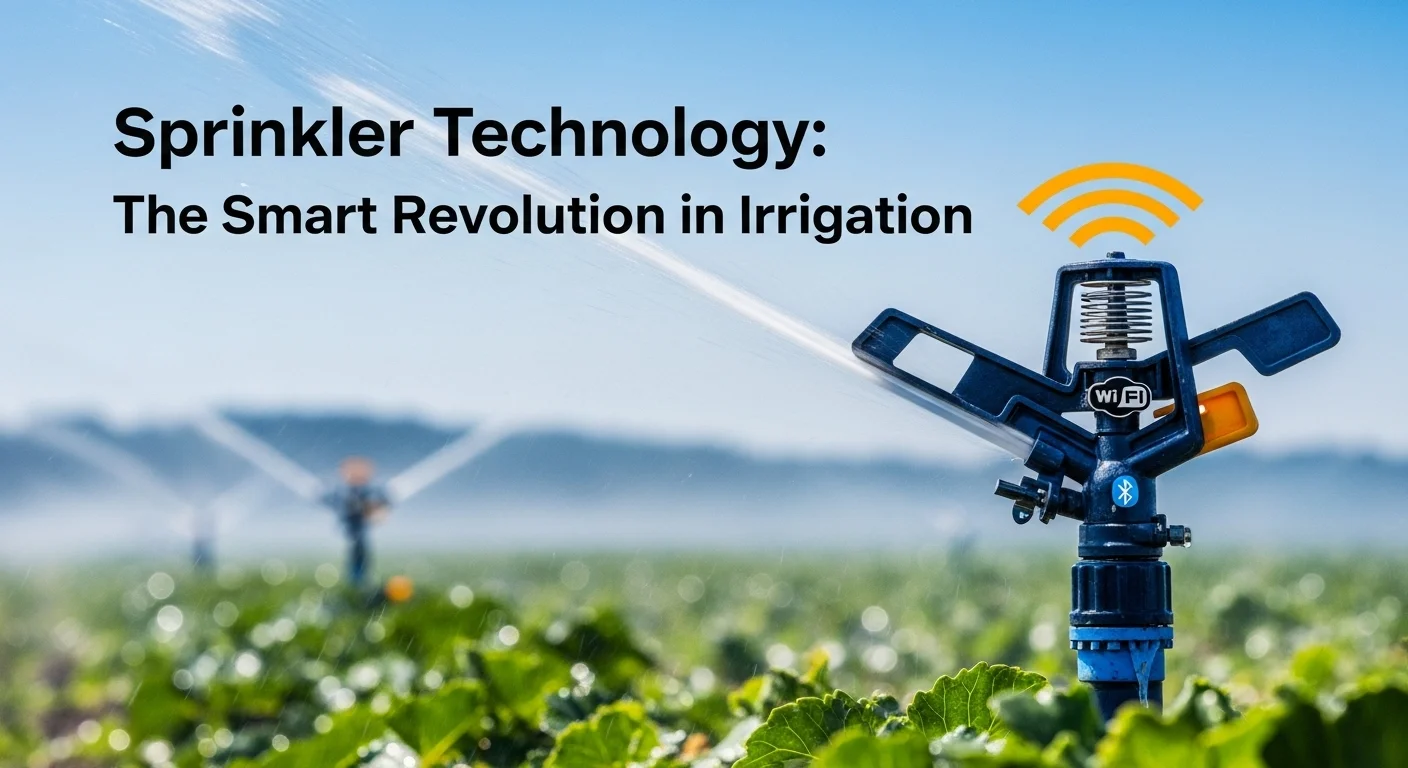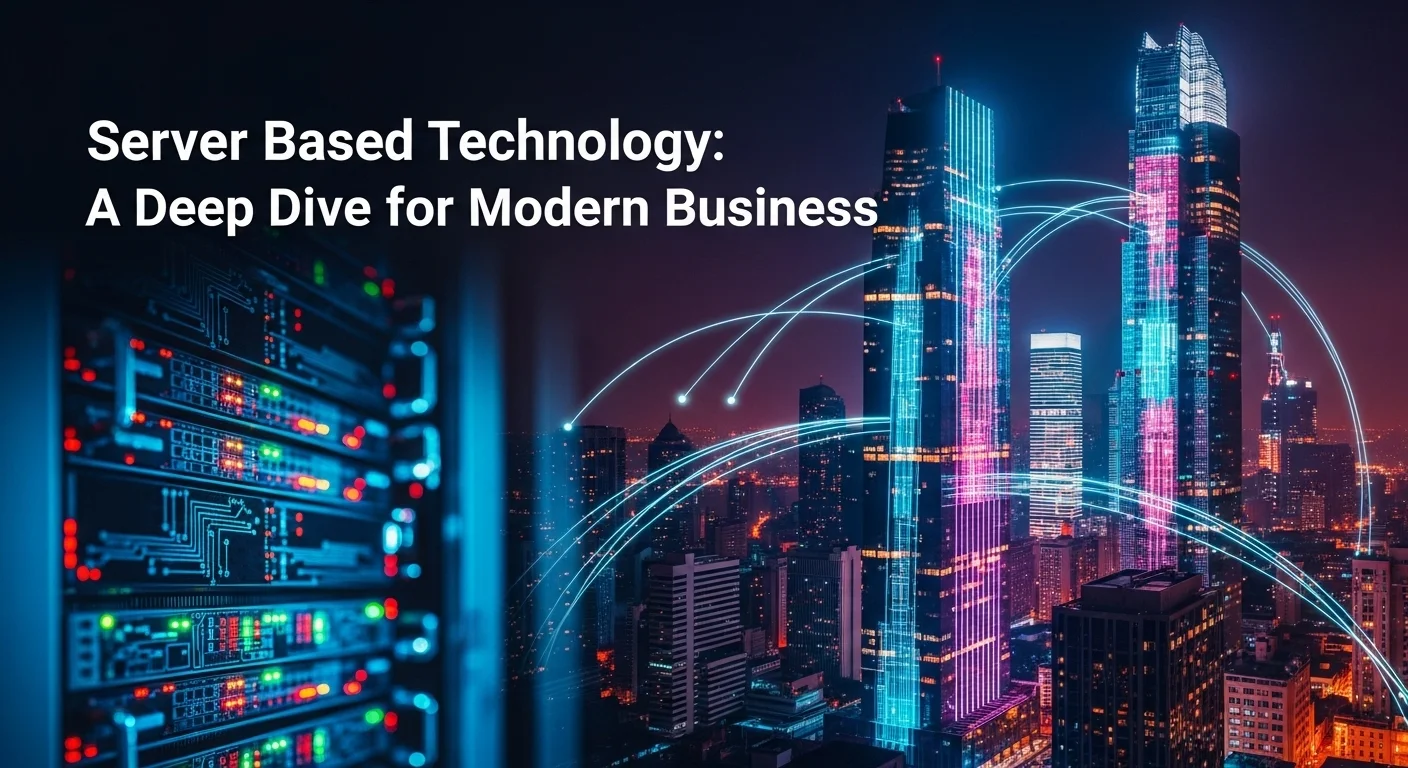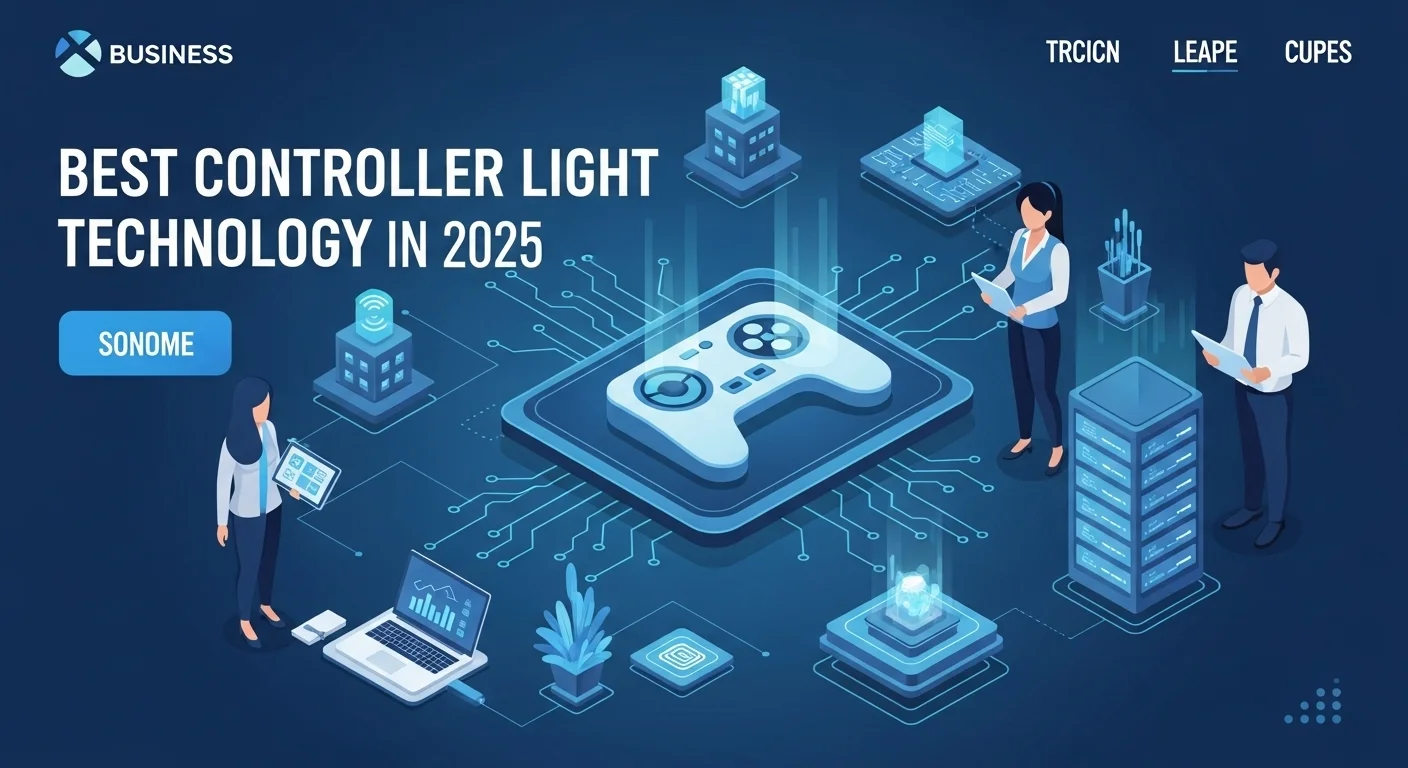Smart Sprinkler Systems: Your Guide to a Greener Lawn and Lower Water Bills

Executive Summary
I remember my old sprinkler timer. It was a clunky box in the garage that I'd set once and then forget about, watering my lawn on the same schedule whether it was scorching hot or pouring rain. It was simple, but it was also incredibly wasteful. The evolution of sprinkler technology from that 'dumb' timer to today's smart, connected systems is one of the best examples of how technology can make a real-world difference in our homes and businesses. Modern sprinklers are now true Internet of Things (IoT) devices, using cloud computing, AI, and live data to water your landscape with incredible precision. In this guide, I'll walk you through how these systems work, with a special focus on integrating them into your smart home, whether you're a fan of Home Assistant's deep customization or Apple HomeKit's seamless simplicity. For businesses in agriculture or landscaping, this isn't just a gadget; it's a tool for massive water savings and a quick return on investment. This is about more than convenience—it's about building a smarter, more sustainable future, one yard at a time.
Table of Contents
Table of Contents
- From Manual Timers to Smart Watering: A Necessary Evolution
- The Brains of the Operation: How Smart Sprinklers Work
- Connecting Your Sprinkler to Your Smart Home
From Manual Timers to Smart Watering: A Necessary Evolution
For decades, the peak of sprinkler technology was a simple mechanical timer. You set it to run on certain days for a certain duration, and that was it. It was a step up from dragging a hose around, but it was fundamentally unintelligent. I can't count the number of times I saw my old system watering the lawn in the middle of a summer downpour. This wasn't just my problem; it was a massive source of water waste everywhere, leading to higher bills and stressed-out lawns that were either waterlogged or parched.
The arrival of smart sprinkler technology completely flipped the script. A modern home automation sprinkler system isn't just a timer; it's a dynamic, data-driven controller. By connecting to your Wi-Fi, it taps into a world of real-time information. It checks local weather stations and forecasts for temperature, humidity, wind, and—most importantly—rain. If a storm is on its way, the system automatically skips the next watering cycle. This feature, often called 'weather intelligence' or 'rain delay,' is the single biggest water-saver for most people. It’s the difference between a tool that follows a blind schedule and an assistant that makes intelligent decisions.
The Brains of the Operation: How Smart Sprinklers Work
So, what makes these systems tick? It's an ecosystem of hardware and software working in concert. When I installed my first smart sprinkler, I was impressed by how these pieces came together:
- The Smart Controller: This is the new brain, replacing your old timer. It's a small computer that connects to your Wi-Fi, running the complex algorithms that decide your watering schedule.
- Valves: These electronically controlled gates are the hands of the operation. The controller sends a signal to a valve, telling it to open and let water flow to a specific 'zone' of your yard.
- Sensors (The Secret Weapon): While optional, sensors are what take your system from 'smart' to 'genius.' A simple rain sensor provides an immediate 'stop' signal when it gets wet. A freeze sensor prevents damage by stopping the system in cold weather. But the real game-changer is a soil moisture sensor. It gives the controller ground-truth data, telling it exactly how much water is at the root level. This allows for the most precise watering imaginable.
- Cloud Platform & Mobile App: The controller talks to a cloud server run by the manufacturer. This is where the heavy lifting happens—analyzing weather data, running AI models, and sending updated schedules back to your device. You interact with all of this through a simple mobile app, letting you monitor and control your system from anywhere.
Connecting Your Sprinkler to Your Smart Home
A smart sprinkler is powerful on its own, but it becomes truly brilliant when it's integrated into your wider smart home ecosystem. This is where you can create automations that make your home feel truly connected. The two biggest players in this space are Home Assistant and Apple HomeKit.
Ultimate Control with Home Assistant
For the tech enthusiast who loves to tinker, Home Assistant offers unparalleled power and local control. With integrations for brands like Rachio and Orbit B-hyve, you can bring your sprinkler into a dashboard with all your other devices. What I love about using Home Assistant for this is the freedom to create truly custom automations that a manufacturer's app could never dream of. For example, you could set up a rule that:
- Pauses the backyard sprinklers if your smart camera detects a person playing on the lawn.
- Prevents the system from running if the contact sensor on your patio door is open.
- Uses data from your own personal weather station for hyper-local accuracy, instead of a regional airport's data.
- Disables watering on the day your shared 'Lawn Mowing' calendar event occurs.
This level of granular home automation sprinkler control turns your irrigation system into a cooperative member of your smart home, not just a standalone gadget.
Seamless Simplicity with Apple HomeKit
If you're invested in the Apple ecosystem, HomeKit provides a secure, private, and incredibly user-friendly experience. Devices from brands like Eve and Rachio offer certified HomeKit compatibility, ensuring they meet Apple's high standards for security.
Once set up, your sprinkler appears in the Home app right alongside your lights and locks. You can ask Siri, 'Hey Siri, water the flower bed for 5 minutes,' and it just works. The automations are powerful and intuitive:
- Create a 'Goodnight' scene that ensures all sprinklers are turned off for the night.
- Set an automation to pause watering if a HomeKit motion sensor in the driveway is triggered.
- Link your sprinkler to your location, so it runs a more aggressive water-saving schedule when you're on vacation.
With HomeKit, the focus is on a seamless and secure experience, making it a fantastic choice for those who want powerful control without a steep learning curve. All communication is encrypted and handled locally by your home hub (like an Apple TV or HomePod), giving you complete peace of mind.

A Deeper Look: The Tech and Business Case for Smart Irrigation
To really appreciate smart sprinklers, it helps to look under the hood at the technology that drives them and understand the massive impact they're having on businesses. This isn't just about convenience; it's a convergence of sophisticated hardware, intelligent software, and a solid financial argument for upgrading.
The Technology That Powers Precision
At its heart, a smart sprinkler system is a marvel of applied technology. Let's break down the key innovations:
Hardware Breakthroughs
- Controllers: Modern controllers are tiny computers with powerful processors and robust Wi-Fi radios designed to get a signal even in a garage or basement. They're built to be a simple swap for old timers, using the same wiring.
- Flow Meters: This is one of the most valuable additions I've seen. A flow meter measures exactly how much water is passing through your pipes. If a sprinkler head breaks, the flow rate for that zone will spike. A smart controller can detect this anomaly, shut down the zone automatically, and send you an alert. It's the difference between a small puddle and a flooded yard with a sky-high water bill.
- Sensors: As I mentioned, sensors provide crucial ground-truth data. Soil moisture sensors are the star here, giving the system hyper-local readings that are far more accurate than just relying on weather forecasts alone.
Connectivity and Communication
How these devices talk to each other is key. Most home systems use standard Wi-Fi to connect to the internet. But for more advanced setups or commercial applications, other protocols come into play:
- Zigbee/Z-Wave: In a deep Home Assistant setup, you might use a battery-powered Zigbee soil sensor that communicates locally with your Home Assistant hub, which then tells your Wi-Fi sprinkler what to do. This creates a reliable local network.
- LoRaWAN: You can't cover a 100-acre farm with Wi-Fi. For huge areas like in agriculture, LoRaWAN (Long Range Wide Area Network) is the solution. A single gateway can collect data from thousands of sensors spread across miles, making it perfect for precision farming.
- Cellular/Ethernet: For absolute reliability, some high-end controllers include an Ethernet port or support a cellular dongle, ensuring they stay connected even if the Wi-Fi goes down.
The Intelligence Layer: Software, Cloud, and AI
The software is what brings the hardware to life. Most systems use a cloud-based model where the controller checks in with the manufacturer's server. That server runs complex AI algorithms that calculate 'evapotranspiration' (ET)—the amount of water lost from the soil and plants. By knowing the ET rate, the system can calculate precisely how much water to put back. The machine learning models get smarter over time, learning the unique characteristics of your yard to become even more efficient.
The Business and Commercial Impact
While I love the benefits at home, the impact of this technology is most profound in the commercial world.
Smart Agriculture (AgriTech)
For a farmer, water is money. Precision irrigation is changing the game. I've consulted on projects where vast networks of sensors and AI platforms control drip irrigation systems with incredible accuracy. The results are staggering:
- Drastic Water Savings: Targeted watering can cut water use by more than half compared to older methods.
- Higher Crop Yields: Giving plants exactly the water they need eliminates stress and can boost yields significantly.
- Lower Costs: The savings come from water, the energy used to pump it, and more efficient use of fertilizer.
- Enhanced Sustainability: Using less water and reducing fertilizer runoff is a huge win for the environment.
Commercial Property Management
Think about a golf course, a corporate campus, or a city park. Managing these large landscapes is a massive expense. Commercial-grade smart irrigation systems allow a manager to control hundreds of zones across multiple properties from a single dashboard. From my experience, the return on investment (ROI) is fast and clear, often paying for itself in just 1-3 years through lower water bills and reduced labor costs.
What Could Go Wrong? Securing Your Smart Sprinkler
Connecting anything to the internet introduces security risks, and smart sprinklers are no exception. It’s crucial to be aware of the potential vulnerabilities:
- The Unlocked Door: Using a weak or default password for your sprinkler account is like leaving your front door unlocked. It's the most common and easily avoidable mistake.
- Eavesdropping: If the communication between your app, the cloud, and the controller isn't encrypted, a hacker could potentially intercept it.
- Software Bugs: Like any software, the controller's firmware can have security holes. This is why updates are so important.
The consequences could range from a prankster turning on your sprinklers at midnight to a malicious actor trying to destroy the turf on a golf course or damage crops. The good news is that securing your system is straightforward:
- Choose Reputable Brands: Stick with manufacturers who are transparent about security and issue regular updates.
- Use a Strong Password & 2FA: This is your best line of defense. Use a long, unique password and enable two-factor authentication if it's offered.
- Keep Firmware Updated: Always install the latest firmware updates to patch any known security vulnerabilities.
- Segment Your Network (Advanced): For those comfortable with networking, putting your IoT devices on a separate Wi-Fi network (VLAN) can prevent a compromised sprinkler from giving an attacker access to your computers or other sensitive data.

Getting the Most from Your Smart Sprinkler: Pro Tips & Strategies
Installing a smart sprinkler is just the first step. To truly unlock its potential for saving water and growing a healthier landscape, you need to go beyond the default settings. Having set up dozens of these systems, here are the tips and strategies I always share with homeowners and businesses to help them maximize their investment.
Best Practices for Every Homeowner
Your smart system's intelligence is completely dependent on the quality of the information you give it and the physical condition of your sprinkler lines.
1. The Most Important First Step: Audit Your System
Before you even plug in your new controller, do a physical audit. A smart brain can't fix a broken body. Turn on each zone manually and walk your property. Look for:
- Broken Heads or Leaks: A single broken head can waste thousands of gallons of water and ruin the pressure for the entire zone.
- Clogged Nozzles: Dirt and debris can block nozzles, causing dry, dead patches.
- Poor Aim: Make sure you're watering your lawn, not your driveway or house. Adjust the spray patterns.
- Bad Coverage: Look for dry spots between sprinkler heads. This 'head-to-head' coverage is essential for an evenly watered lawn.
Fixing these physical issues first is the single most effective thing you can do to improve efficiency.
2. Garbage In, Garbage Out: Master the Configuration
During setup, the app will ask for details about each zone. Be meticulous here. Guessing will lead to a poorly performing system. For each zone, you need to accurately input:
- Plant Type: Grass, shrubs, flowers, and trees all have very different needs.
- Soil Type: This is critical. Sandy soil drains fast and needs short, frequent watering. Clay soil absorbs slowly and needs a 'cycle and soak' approach to prevent runoff. Most apps have a guide to help you figure this out.
- Sun/Shade: A zone in blistering afternoon sun needs far more water than one in deep shade.
- Nozzle Type: The system needs to know if you have fixed spray heads, rotors, or drip lines to calculate how much water is being applied.
- Slope: A steep slope requires a different strategy than a flat lawn to avoid water simply running off.
3. Unleash True Automation
Once you have the fundamentals right, it's time to have some fun with deeper smart home integrations.
For HomeKit users, this means getting creative with Scenes and Automations:
- Build a 'Backyard BBQ' scene that turns on your patio lights and music, while also guaranteeing the sprinklers stay off for the night.
- Use geofencing to automatically enable a super-aggressive water-saving mode when everyone has left the house.
For Home Assistant enthusiasts, the sky is the limit. You can write automations that are tailored perfectly to your life:
- Integrate a wind sensor to not just pause watering on windy days, but to increase watering time slightly on hot, dry, and breezy days when evaporation is high.
- Use a bed occupancy sensor to ensure the sprinklers outside your bedroom window never run while you're asleep.
- Create a simple dashboard script that lets you run any zone for a set number of minutes—perfect for giving the kids a quick spray on a hot day or washing pollen off the car.
Strategies for Business and Commercial Users
For a business, the focus is all about ROI and operational efficiency. The strategies are about scale, data, and smart management.
1. Calculate and Prove Your ROI
Before you upgrade, build the business case. Calculate your current water and labor costs. Project the savings based on the 30-50% reduction many businesses see. After installation, use the system’s built-in reports to track your actual water use and validate that ROI. This data is pure gold for your company's sustainability reports.
2. Centralize Your Control
Choose a commercial-grade platform that lets you manage all your properties and controllers from one dashboard. For large facilities, integrating the irrigation system with a master Building Management System (BMS) offers a holistic approach to resource management.
3. Use Data to Plan for the Future
The historical data from your system is incredibly valuable. Analyze it to:
- Spot Slow Leaks: If a zone's water usage is slowly creeping up over several months, it could indicate a weeping valve or slow underground leak that you would otherwise never notice.
- Optimize Your Landscape: After a few years, you'll have a clear picture of which areas consistently need more or less water, informing future decisions about plant choices or converting spray zones to high-efficiency drip irrigation.
The Future of Sprinkler Technology
This field is evolving quickly. Here’s a glimpse of what I see coming next:
- Hyper-Local AI: Systems will increasingly use on-site cameras to analyze actual cloud cover and atmospheric conditions, moving beyond regional weather data for ultimate precision.
- Computer Vision for Plant Health: Imagine a system that uses cameras to detect the early signs of disease or pests on your lawn, then automatically adjusts watering and sends you an alert to apply treatment.
- Water-as-a-Service (WaaS): The business model itself may change. A commercial property might subscribe to a service that guarantees landscape health for a monthly fee, with the provider managing all the technology and maintenance.
- True Autonomy: As standards like Matter mature, creating a cohesive smart home with devices from different brands will become easier. The goal is a system that is almost completely autonomous, finally delivering on the true 'set it and forget it' promise of smart technology.
By applying these tips, you can transform your sprinkler from a simple utility into a powerful tool for efficiency, sustainability, and intelligent automation.
Expert Reviews & Testimonials
Sarah Johnson, Business Owner ⭐⭐⭐
The information about Sprinkler is correct but I think they could add more practical examples for business owners like us.
Mike Chen, IT Consultant ⭐⭐⭐⭐
Useful article about Sprinkler. It helped me better understand the topic, although some concepts could be explained more simply.
Emma Davis, Tech Expert ⭐⭐⭐⭐⭐
Excellent article! Very comprehensive on Sprinkler. It helped me a lot for my specialization and I understood everything perfectly.



